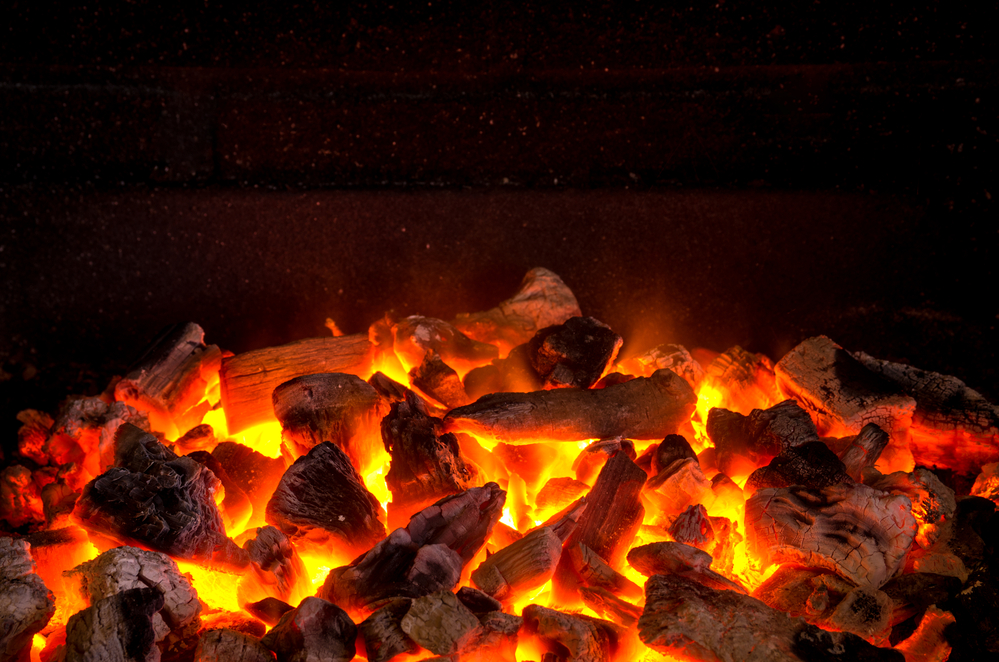Can you think of a singer you love who is characterized by a creaky voice? Some singers use vocal fry as a technique to make their voices unique. It seems to be spreading across not only singing voices but speaking voices as well, which means it’s important to know more about it.
Here are some facts about vocal fry:
1) A slow vibration of the cord muscles. This is why we must approach it with ease and without tension. Tension actually speeds up the vibrations and will either produce a pinched fry.
2) A vocal therapy for the cords. The fry focuses on rehabilitating the inner edges of the cords. It also works great as a warm-up, since vocal fry comes so naturally to the groggy, cold voice.
3) Leaving the Basement. Even though its origins are low in pitch frequency, try rolling up from that sound to higher fry sounds. The trick is to not add volume but hold back the growth of the note and lightly cry upwards. You should hear a small measure of fry in higher tones.
4) A Great Bridge Builder. Once you’ve found your fry, try inserting it into scales or slides where you tend to suffer from the breaking or flipping between chest and head. Vocal fry keeps the cords closed through these pesky transitions.
I’ve witnessed many mishaps lately when it comes to vocal fry. I think it’s important to understand both what vocal fry is and what it is not before it can be utilized correctly. So now let’s talk about what it is NOT…
What Vocal Fry is NOT
1) Pressurized or Squeezed. This is perhaps the most common mistake I hear. Students hear the low rumble and assume they need to press down on the cords To make the sound. Vocal fry requires almost no pressure and should feel lazy more than anything.
2) Always Low in pitch. While usually vocal fry is easiest to find in your chest voice or low end, it can be produced anywhere. Knowing this helps prevent us from forcing a low throat tone that feels uncomfortable.
3) A thick closure of the muscle. While vocal fry can have a thick sound, appearances can be deceiving. In the same way, pharyngeal exercises sound incredibly harsh and aggressive sometimes but feel really released and

Why Is It Called Vocal Fry?
Can you think of a singer you love who is characterized by a creaky voice? Some singers use vocal fry as a technique to make their voices unique.
The term “vocal fry,” comes from the sound of something frying in a skillet. You know all those crackles and sizzles? It’s a somewhat difficult thing to imagine a voice doing, but once you hear it, it makes perfect sense. When a Kardashian speaks, you’ll know what we’re talking about.
Radio personalities are a perfect example of vocal fry in action. The low, frequency range and little breath pressure create a pleasing, relaxing tone that audiences respond to.
Exploring the Nature of Vocal Fry and Vocal Folds
What makes a person’s voice unique is the size and shape of the vocal cords. The vocal cords (also called vocal folds) are two strips of muscle tissue that sit on either side of the larynx, Much like a guitar string, when you speak, the vocal cords move and vibrate. This is how they produce sound. They then close when you’re not speaking to allow for airflow.
With vocal fry, you can typically see the difference. Their vocal cords will vibrate slowly and probably won’t squeeze closed as tightly as they should. The lower pitch that is often associated with vocal fry may be a natural voice register for some, while others, especially young adult women, may have to cultivate the other vocal register to sound low enough.
Vocal fry, also known as glottal fry, though not necessarily harmful on its own, can sometimes be a sign of an underlying condition. It can be a side effect of a voice disorder or an underlying health issue. On the other hand, some people just have a naturally raspy tone. Young students tend to overuse vocal fry or do it incorrectly, which can cause a scratchy feeling or hoarseness. While a little vocal fry is not typically harmful, if symptoms persist, it is important to speak with a speech-language pathologist about your concerns.
Vocal fry used in singing is a viable technique, but be aware that it may negatively affect other people’s perception of you and your work. Your voice is incredibly influential when it comes to the perception of your social status, personality, and emotions. Some observations show that young women, especially, are perceived as less intelligent and competent when using vocal fry, as opposed to their normal speech patterns.
Expanding the Vocal Fry Range
Many people think of vocal fry as only existing within your lowest register, but in fact, it can span throughout your entire range. It is absolutely easiest to get comfortable in the lowest register, and that is likely where you’ll spend the bulk of your time perfecting your technique so that when you do stretch, you aren’t harming anything.
Though we don’t typically think of vocal fry as stretching beyond low pitches, unlocking the fry higher up is a great way to test yourself and move beyond the conventional boundaries of singing. Stretching your vocal capabilities is a great way to broaden your expressive range and test the bounds of the human voice.
Vocal Fry as a Bridge Builder
Vocal fry isn’t always just a stylistic decision. It can be a very useful tool for bridging the gaps between different registers and it can help with addressing challenging vocal transitions. This technique can allow singers to navigate these tricky transitions and achieve a seamless, connected vocal performance that audiences will respond to.

Understanding the Role of Vocal Fry Register
If it’s so useful, how do we utilize this tool, then?
It is very common for singers to compress their voices when they’re singing. This leads to strain, which can harm your voice in the long run. We want to do our best to avoid that.
Sometimes, singers have a hard time bridging gaps or singing high notes because of their technique. Vocal fry is a good way to help your voice by allowing it to relax. If vocal fry is all about loose, non-compressed vocal cords, it would make sense to use it beyond just one of your vocal registers, right?
The natural grit that comes with vocal fry makes it a great way to add emotion to your song without damaging your voice by screaming, for example.
Vocal Fry for Warm-up and Rehabilitation
Why do we do hot yoga but not freezing yoga? Why don’t we crank the heat down and avoid all that uncomfortable sweat and humidity?
It’s because the heat actually serves a purpose. It gets your muscles primed and extra flexible. It’s the same idea with your vocal cords. We warm up so that the muscles we use to sing aren’t cold and are nice and flexible for our performance.
Vocal fry is a great way to prepare for singing. It helps with extending range, improving tone quality, and allowing for greater ease when singing.
It’s especially great when you’re a little crunched for time. Simply activate vocal fry and sing a scale up and down. It will quickly warm up your vocal range and stretch out those muscles for their upcoming workout!
Remember not to crack your voice or stretch it too far. The last thing you want to do right before your performance is strain your voice.

Common Challenges and Solutions in Vocal Fry
Perhaps the biggest mistake that new vocal fry users face is trying to force it. When you wake up in the morning, that creaky, relaxed voice that so characterizes that part of the day is vocal fry. If you can do it just after waking up, there’s clearly little “effort” necessary. Now, learning how to use it intentionally can be somewhat difficult, but forcing it isn’t the way to go. Forcing vocal fry will lead to strain and damage to your voice. Instead, try relaxing your way into it. Relax your vocal fold, mouth throat all the way before attempting. See if that doesn’t immediately improve your efforts.
Conclusion
Key aspects of vocal fry. Encouraging further exploration and utilization of vocal fry in singing. Emphasizing the importance of proper technique and vocal health in incorporating vocal fry
To book a lesson with Shelby Rollins, contact booking@singingsuccess.com or 615-866-1099.

Is your singing voice strained, shaky, or just unreliable?
2) Always Low in pitch. While usually vocal fry is easiest to find in your chest voice or low end, it can be produced anywhere. Knowing this helps prevent us from forcing a low throat tone that feels uncomfortable.
3) A thick closure of the muscle. While vocal fry can have a thick sound, appearances can be deceiving. In the same way pharyngeal exercises sound incredibly harsh and aggressive sometimes but feel really released and thin, vocal fry is a light, thin closure of the cords.
Ok now let’s talk about what vocal fry IS and how to find it…
Vocal fry IS…
1) A slow vibration of the cord muscles. This is why we must approach it with ease and without tension. Tension actually speeds up the vibrations and will either produce a pinched fry.
2) A vocal therapy for the cords. The fry focuses on rehabilitating the inner edges of the cords. It also works great as a warm-up, since vocal fry comes so naturally to the groggy, cold voice.
3) Leaving the Basement. Even though its origins are low in pitch frequency, try rolling up from that sound to higher fry sounds. The trick is to not add volume but hold back the growth of the note and lightly cry upwards. You should hear a small measure of fry in higher tones.
4) A Great Bridge Builder. Once you’ve found your fry, try inserting it into scales or slides where you tend to suffer from the breaking or flipping between chest and head. Vocal fry keeps the cords closed through these pesky transitions.
Any other vocal fry plights?? Let me know!
Happy singing!
To book a lesson with Shelby Rollins, contact booking@singingsuccess.com or 615-866-1099.






